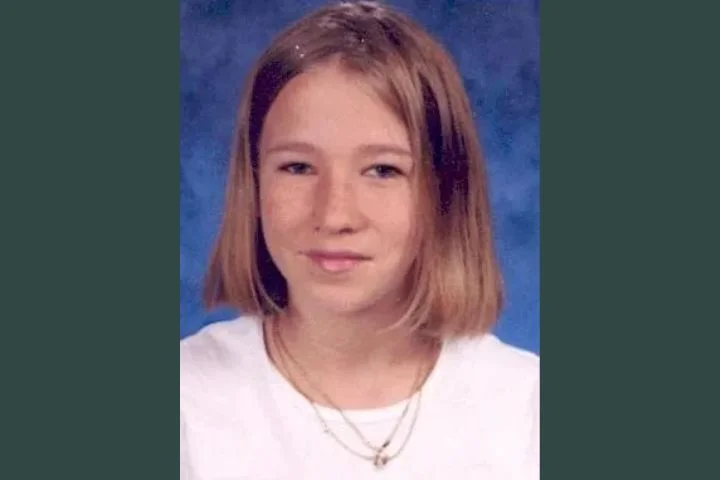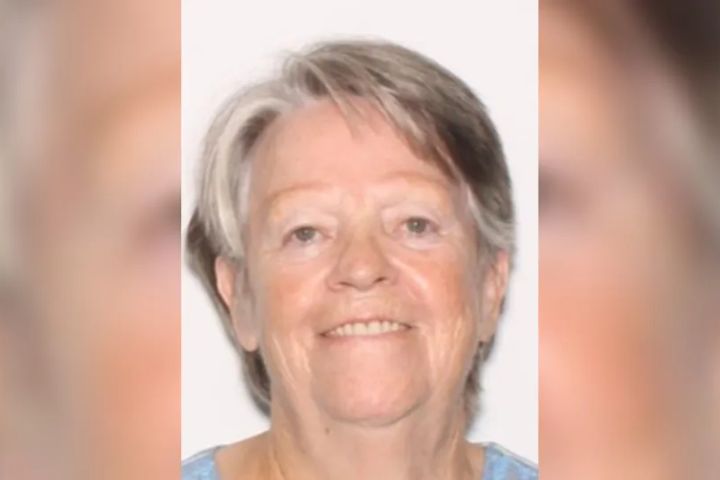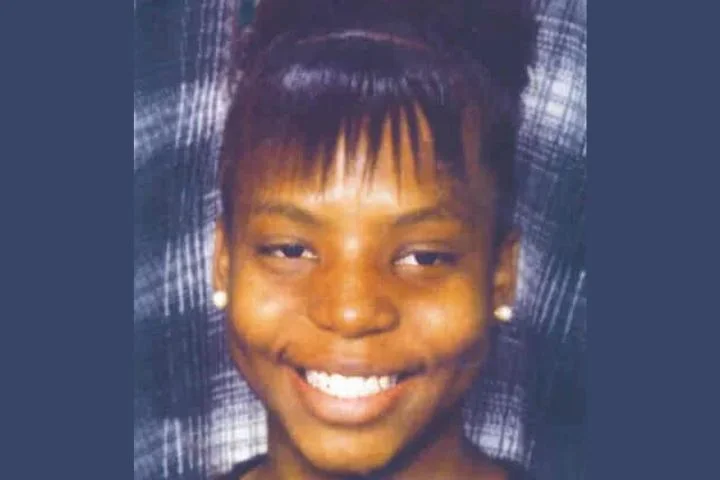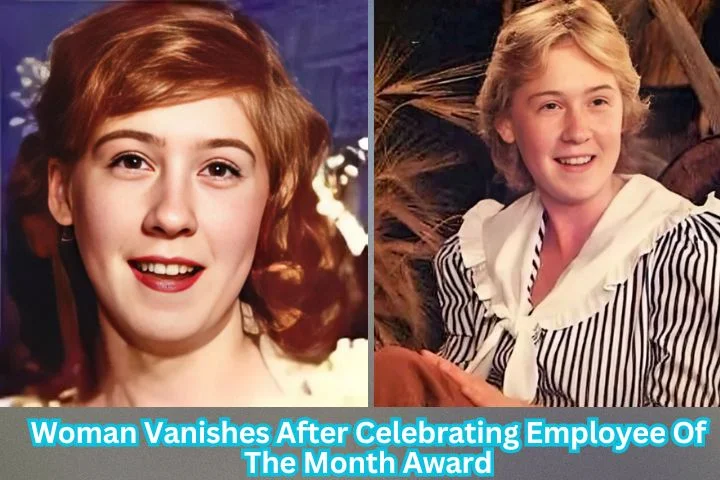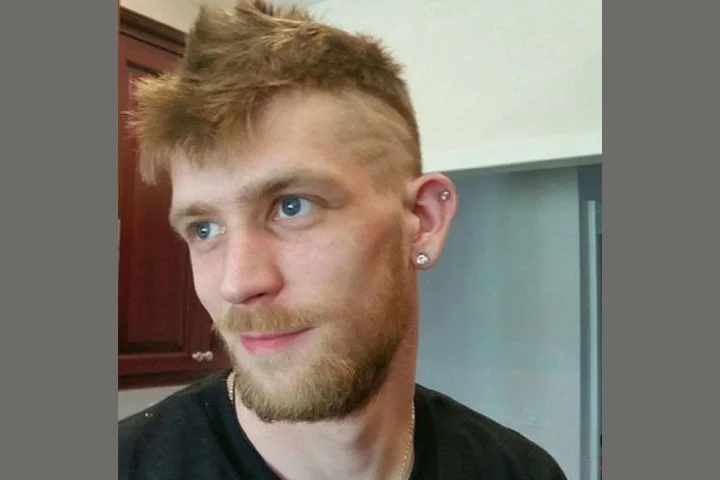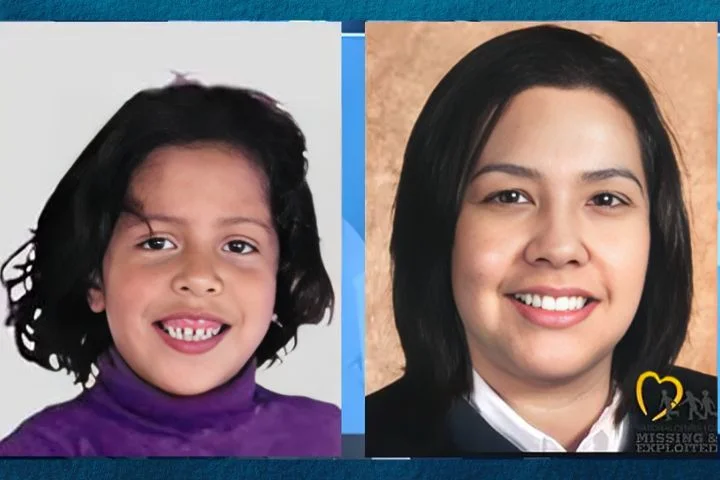April 29, 2003 started out completely normal, exactly like hundreds of other days had in the East Nashville home of the Tuders family. Debra Tuders woke up first, getting ready for work in the predawn darkness. When she got out of bed, she had to step over her 13-year-old daughter, Tabitha, who was curled up on the floor at the foot of her parents’ bed. Tabitha had her own room, and a purple canopy bed she loved. She went to sleep each night in her bed, but more often than not she would wake up in the middle of the night, drag her blanket into her parents’ room, and curl up on a makeshift bed of pillows on their floor. It just made her feel secure. It may have been odd, but she wasn’t hurting anything, so her parents let her do it. Debra was used to stepping over her as she got ready for work, it was just another part of the morning routine.
Debra worked as a cook in the cafeteria of a local elementary school, and always left home around 6:00am to get there on time. Her husband, Bo, was a short-haul trucker for a local lumber company and didn’t leave the house until 7:00am. Each morning, the last thing he did before leaving the house was wake Tabitha up so she could get ready for school. He told her he loved her and would see her that evening. When he left, she was still in her nightgown and somewhat groggy, but assured him she was awake. She needed to catch the bus to Bailey Middle School at 8:00am, and the bus stop was a five-minute walk from her home. She would leave each morning at 7:50am. Her mother didn’t want her to leave any earlier because she didn’t want her to spend any time alone at the bus stop. Leaving at 7:50am usually meant that there were others already at the stop when Tabitha got there.
Tabitha got dressed in a pair of Mudd jeans and a light blue shirt, then pulled on her white Reebok sneakers. She left her home on Lilliam Street at 7:50am like she always did, heading for her bus stop a short walk away at the corner of South 14th Street and Boscobel Street. She was carrying a sheet of paper with her, most likely the report card she had proudly brought home for her parents to sign the day before. She had gotten straight As. When she got close to the first bus stop, just a block from her house, there was no one there so she headed for the second bus stop another block away. This was a standard safety precaution her mother had taught her so she would never be lingering on a corner by herself.
When Debra got home from work around 1:00pm, the house was empty. This was normal; Tabitha would usually come home at 4:00pm. When 4:00pm came and went without Tabitha skipping through the front door, Debra started to get worried, but figured the bus was just running a few minutes late. As the minutes continued to tick by with no sign of her daughter, Debra decided to make the three-block walk down to the bus stop. She checked with a neighbor, but she hadn’t seen the teen either. She accompanied Debra down to the bus stop. It was possible the bus just hadn’t dropped her off yet, or maybe she had stopped to chat with a friend and lost of track of time. There was no one at the bus stop when Debra got there, and her concern for her daughter was escalating. Tabitha had never before been late coming home from school. Unsure what to do next, Debra drove over to the middle school. Although she knew it was unlikely, perhaps Tabitha had some sort of afterschool activity and had simply forgotten to let her know ahead of time. That hope was quickly dashed, as Debra found the doors to the school had already been shut and locked.
Bo got home from work at 5:00pm to find that his daughter hadn’t come home from school and his wife was in a state of panic. It was a situation no parent is prepared to deal with. He and Debra drove back to Bailey Middle School and pounded on the locked doors. They were able to get the attention of a janitor, who unlocked the door and allowed them into the school. They frantically raced through the empty hallways of the school, but found no sign of Tabitha. They did find a teacher, however, and explained to him what was going on. The news he had for them wasn’t good: Tabitha hadn’t been at school at all that day. Fighting hysteria, Bo and Debra knew that could only mean one thing. Their daughter had been abducted.
The Tuders never believed for a second Tabitha had run away. If she was missing, someone had taken her. Their daughter was not a young teenager trying to act older than her years. She still bought most of her clothes from the children’s department. Her room was filled with teddy bears and other stuffed animals, and she had a collection of G-rated movies. She didn’t have a huge makeup collection, and rarely wore any except for peach-flavored lip gloss. Tabitha was in seventh grade at Bailey Middle School, where she was well-liked and was an excellent student. She and her best friend would sometimes volunteer to help out in the school library, fighting over who would get to use the electric stapler. The librarian recalled that Tabitha usually won. She never got into any trouble at school, and she seemed to be a happy and well-adjusted teenager, with nothing to indicate any problems at home or with friends.
About six months before she went missing, Tabitha had started attending church with her best friend’s family. It was something she decided to do on her own, and she seemed to enjoy it. She loved to sing and joined the church choir, and had volunteered at a spaghetti dinner the church held. The Sunday before she went missing, she had received a $20 prize at Sunday School for memorizing the Ten Commandments. Investigators would find the money in her room, untouched.
She was also extremely close with her parents, preferring to spend her free time with them. She would go to Saturday night car races with them all the time, cheering on her older brother who was one of the drivers. Often, some of her friends would go with her, but Tabitha went even if they didn’t. She was exceptionally close with her mother, and the two were almost always together. She rarely went anywhere without her mom, but if she did, her mother knew where she was going and when she would be back. If she had been an unreliable child, the fact that she hadn’t returned home from school on time may not have been quite so terrifying to her parents. But this was a child who had never spent any extended amount of time away from home. As they left the school that afternoon without their daughter, Bo and Debra were almost paralyzed with fear.
The couple raced home and called the police to report their daughter missing. When an officer responded 45 minutes later, they told him that Tabitha had never done anything like this, and they were absolutely positive that she would not run away from home. The officer wasn’t so sure. Tabitha was a 13-year-old girl, and they can often act in unpredictable ways. Even the most obedient child can turn wild once the teenage years hit. Since no one had witnessed an abduction, the case didn’t meet the criteria necessary for law enforcement to issue an Amber Alert. But there was no evidence that Tabitha was a runaway, either. With nothing to go on one way or another, police launched a search in the neighborhood. They also alerted the National Center for Missing and Exploited Children about Tabitha, and called the local news media so they could help get the word out on the evening news that night.
Whether they thought Tabitha ran away or not, within the first few hours of the search, more than a hundred officers were involved — nearly a third of the Nashville officers who were on duty at the time responded to the call. Officers began doing a door-to-door search in the neighborhood, and searched all empty buildings and businesses in a two-mile radius. They tried to get a helicopter to assist from the air, but the weather got progressively worse as the night went on and their helicopters were grounded. Hours passed, and they hadn’t found any sign of Tabitha. More than a dozen officers kept searching overnight, hoping to find anything that could point them in the right direction.
Once of the biggest problems police faced was the time difference between when Tabitha was last seen and when she was reported missing. Since her parents had assumed that she had made it safely to school that morning, it wasn’t until the late afternoon that they realized something was wrong. By the time police were called in, Tabitha hadn’t been seen in over 10 hours. If she had been abducted, she could have been anywhere in the state by then — or in one of 13 other states. It put the investigators at a huge disadvantage. Time is the most critical factor in child abduction cases: almost 75% of children who are abducted and then mur*dered are k*illed within three hours of going missing. It is a sobering statistic.
Five detectives were assigned to work on the case fulltime. These detectives believed there were people in the community who had useful information but were not coming forward with it. Noting that Tabitha had disappeared on a sunny morning, at a time when kids were waiting at bus stops and parents were driving to work, they urged anyone who may have seen anything even slightly out of the ordinary to call. It seemed impossible that the teen could have been abducted at that time of day without someone noticing.
As they continued to interview people, a boy came forward to say he had seen something concerning. The 11-year-old was also a student at Bailey Middle School, and he had been waiting at the bus stop that Tabitha was walking towards. He told detectives that he saw her walking down the hill towards the stop on Boscobel Street. When she was about 30 yards from the bus stop, a red car had pulled over next to her and she had gotten inside. The car had come from 14th Street and was headed towards 15th Street when it pulled over. After Tabitha got in, the driver, a dark-skinned male wearing a backwards baseball cap, had then turned the car around and headed back up the hill. If true, this was a tip that could potentially solve the case. Yet police said they did not find the boy to be credible, and they hadn’t been able to confirm anything he said. Still, if he was correct, he was the last person to see Tabitha before she vanished, and his potential sighting would be reinvestigated numerous times over the years.
In the middle of May, Bo and Debra traveled to New York City to tape a segment for “The John Walsh Show.” Even though they were only gone for a couple days, Debra dreaded being away from home. She was terrified that she was going to miss a call from Tabitha, and had certainly never envisioned that she would one day be appearing on national television. Still, she knew that the publicity could help bring Tabitha home, and she was gratified when John Walsh said he was certain Tabitha wasn’t a runaway. Three weeks into the disappearance, Metro police still believed there was a chance that Tabitha was voluntarily missing.
Tabitha’s friends and family continued to insist that the teen had not run away from home. She had no reason to. She had gotten straight As on her last report card, and had been looking forward to an upcoming class trip to Kentucky Kingdom. The trip went on, as planned, on May 17th. Many of Tabitha’s classmates wore buttons with her picture on them to honor her when they went.
In July, Metro police added investigators to the case and started using some of their patrol officers to help seek out leads. Deborah Faulkner, the acting police chief, told the media that she was concerned because there wasn’t much information coming in about the case. She had been under fire since the beginning of the investigation by people who didn’t believe the police department had taken the investigation seriously, and now it looked like the case was going cold.
Detectives renewed their effort to identify and track down all registered sex offenders in the area. Beat officers, who did not normally do any independent investigations, started questioning people in the hopes that they could identify potential sightings of the missing girl. People who lived in Tabitha’s neighborhood were re-interviewed, with investigators concentrating on those who believed they had seen the young girl as she walked towards the bus stop that morning.
Oh July 15th, police announced that they were shifting their focus from a possible runaway case to one of possible foul play. They noted that, while they still did not have any evidence to prove Tabitha had been hurt or abducted, the fact that she had been missing this long with no contact and no confirmed sightings led them to believe that she hadn’t left voluntarily. It was what her friends and family had been saying all along. Unfortunately, it brought them no closer to finding Tabitha, and the case grew cold.
When the investigation first started, detectives were receiving more than 50 tips a day about the missing girl. A year later, this had slowed to a trickle of only five or six tips a month. While it was still considered an active investigation, detectives were running out of leads to follow. Knowing that they needed to keep Tabitha’s picture out there to ensure the public didn’t forget she was missing, her family created “Team Tabitha.” The teen had adored going to the Saturday night car races at Highland Rim Speedway with her parents. Her brother, Kevin, was one of the race car drivers, and he had loved seeing his little sister there to cheer him on. Now, he and three other drivers — Team Tabitha — had large pictures of Tabitha mounted on the hoods of their race cars. They raced the cars every Saturday night, and the racetrack would announce the phone number for the tip line before their races. They were hopeful that this might bring in the tip they needed to crack the case.
As time went by with no progress, Tabitha’s case slipped out of the headlines. Eventually, it was reduced to a boilerplate article run once each year on the anniversary of her disappearance. The East Nashville neighborhood where the Tuders lived underwent a gradual change over the years, bringing new neighbors who had never heard of the missing girl. The little white house on Lillian Street remained the same, however, even as larger, cookie-cutter homes sprang up around it. The large vinyl banner with Tabitha’s picture remained on the front porch, even if those walking by never met the young girl featured on it. Life went on around them, but the Tuders remained frozen in time, unable to move forward without knowing what had happened to their daughter.
Detectives still worked any leads that came in, and as the five-year anniversary of the disappearance grew near, they decided to work with the media to see if they could draw in any new tips. They asked the local newspapers and news stations to feature the case, and the media was more than happy to help. While there was no new information to report, they ran large articles rehashing the case from the beginning, and included phone numbers for people to call if they had any information.
The media coverage did lead to a surge in tips, and detectives followed up on all of them. Many concerned angles that they had already pursued, but one lead appeared to be especially promising. In the years since Tabitha disappeared, one of her cousins had opened up a tattoo parlor. She was working there when a male customer made several interesting comments about the case. He claimed that he had been on Boscobel Street the morning Tabitha went missing, and he had seen her get into a car. His story was very similar to what the young boy at the bus stop claimed to see, with one significant difference: this man insisted the car was green, not red as the recent article had said. If true, this was a stunning revelation, but police were confused as to why the man had never bothered to come forward before. They took the lead as far as they could, but were unable to find any information linking Tabitha and the car.
Around the seventh anniversary of the disappearance,, the FBI announced that they were offering a $25,000 reward for information that would lead to finding Tabitha. They were hopeful that the large reward would be enough to entice anyone who had information to finally come forward. They firmly believed there were people who were withholding information, and they knew that money could be a very powerful motivator. Eight teams consisting of FBI agents and Metro police detectives also went door to door in the area, speaking with residents and handing out flyers with Tabitha’s picture as well as the new reward information. An age progressed picture of Tabitha was also released to give people an idea of what she might have looked like as a 20-year-old woman.
Despite the renewed push for information, Tabitha’s case remained cold. Though there were still occasional sightings reported, Bo and Debra no longer got their hopes up when they heard about one. There had been a possible sighting reported in Nevada in 2010, and the girl looked so much like Tabitha that they family asked to have a DNA test done. Unfortunately, the test ruled the girl out. She was not Tabitha. In 2015, police received a tip that Tabitha was living in Nebraska. The information given over the phone sounded promising enough that investigators were sent to check it out, but they returned emptyhanded. It would later be determined that the call had been a hoax, originating in a different country.
In April 2016, the FBI announced that they were doubling the reward offered in Tabitha’s case. Unfortunately, not even the prospect of $50,000 was enough to bring in the information needed to solve the case.
Recently, police announced that it was possible Tabitha was forced into the sex trade after being abducted. Still, they believe it’s possible she is still alive out there somewhere, and are still working to bring her home. It’s very likely there are people out there with the information needed to close this case, and police would love to hear from them.
The Metro Police Department and the FBI are still actively searching for Tabitha Tuders, and there is currently a $50,000 reward for information that leads to the resolution of her case. Tabitha has been missing since April 29, 2003. She was 13 years old, with blonde hair and blue eyes, stood about 5 feet tall and weighed 90 to 100 pounds. When last seen, she was wearing a pair of Mudd brand blue jeans, and light blue shirt, and white Reebok sneakers, and she was carrying her report card. If you have any information regarding Tabitha, please call Metro Nashville Police Department Detective Steven Jolley at 615–862–7843.
